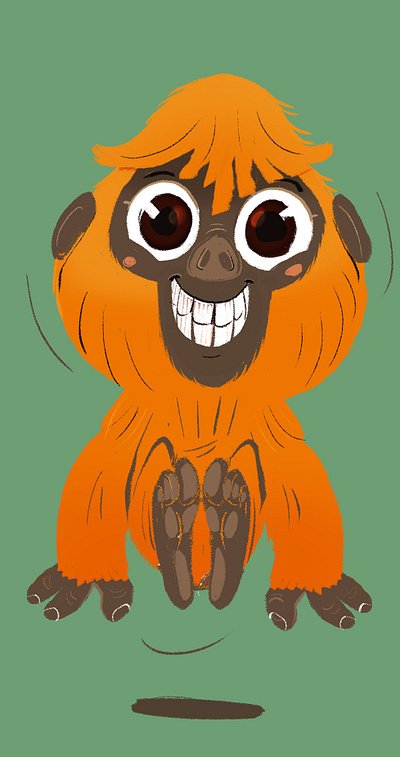
The Bornean orangutan (Pongo pygmaeus) is a testament to millions of years of adaptation and change. Imagine they are the wise old sages of the jungle, carrying secrets of survival and evolution within their genes. Today, let’s dive into their evolutionary history, touching on how they developed, the challenges they’ve faced, and why understanding their past is crucial for their future—and, in some ways, ours.
Origins of the Orangutan
The journey of the Bornean orangutan begins around 12 to 16 million years ago—long before humans even existed. During this time, the ancestors of modern orangutans roamed the forests of Southeast Asia. They were part of a larger group of primates that included gibbons and macaques. Initially, these ancestors spread across vast regions, but over millions of years, they became isolated in different environments, leading to unique adaptations.
You might be wondering how these adaptations took shape. As climate and habitat changed, some ape populations ended up on the islands of Borneo and Sumatra. Here, the orangutans evolved to thrive in a life high up in the trees. Their long arms, strong grasp, and incredible balance made them excellent climbers—like acrobats swinging effortlessly from branch to branch. This tree-dwelling lifestyle not only protected them from ground predators but also allowed them access to a diet rich in fruits, leaves, and insects.
Interestingly, Bornean orangutans share a common ancestor with Sumatran orangutans, but they took separate evolutionary paths as their habitats shifted. These differing environments fostered distinct traits—like the Bornean’s stockier build compared to the slimmer Sumatran cousin. It’s fascinating to think about how geography can shape a species over time, don’t you agree?
The Role of Habitat in Evolution
Now, let’s explore how the lush rainforests of Borneo played a significant role in the orangutan’s evolution. These forests are not just beautiful; they are complex ecosystems that offer various resources. The orangutan’s diet primarily consists of fruit, especially durian, which is abundant in Borneo. Their ability to reach high branches allowed them to access food that many other animals couldn’t. This high-up existence nourished their evolution and social behavior, which we’ll discuss shortly.
The benefits of this habitat extend beyond just food. The dense trees provide shelter and protection, crucial for young orangutans who rely on their mothers for survival. This nurturing environment has promoted extended periods of learning and development. Young orangutans stay with their mothers for up to seven years, during which they learn essential skills—like how to forage for food and navigate the treetops. You could think of it as a long-running apprenticeship in jungle survival.
However, the Bornean rainforest isn’t without its challenges. As the environment changes due to climate change and human activities, orangutans face new threats. Habitat loss is a significant concern that disrupts their evolution and survival, forcing them into smaller, fragmented areas. Understanding these challenges helps us realize the urgency of protecting their habitats and ensuring they have a future.
Physical Characteristics and Adaptations
So, what makes the Bornean orangutan stand out? Their physical adaptations are key to their survival. For starters, those long arms I mentioned earlier can reach up to 7 feet! This incredible reach allows them to swing gracefully between branches and forage for food high above the ground. Their strong, curved fingers have evolved specifically for gripping branches—like nature’s built-in climbing gear.
Also, don’t underestimate their intelligence. Orangutans are known for their problem-solving skills and ability to use tools. They’ve been observed using sticks to extract insects from tree bark or even fashioning leaves into makeshift umbrellas. This cleverness is a hallmark of their evolutionary journey, showcasing how adaptability can lead to survival. They learn from their environment and pass on knowledge to their young, which is incredibly vital for their species.
Another interesting aspect is their coat. The Bornean orangutan has a thicker, longer fur compared to its Sumatran counterpart, which helps to keep it warm in the varied climates of Borneo. This may seem like a small detail, but it’s a brilliant example of how evolution fine-tunes species to fit their surroundings perfectly.
Social Structure and Behavior
You might be surprised to learn that Bornean orangutans are mostly solitary creatures. Unlike many primates that live in groups, these orangutans often prefer to keep to themselves. Here’s the thing: their solitary nature is a result of their feeding habits. Since their primary food source—fruits—can be patchy and unpredictable, staying alone minimizes competition for food.
However, that doesn’t mean they’re completely antisocial. Adult males often roam their territory and may encounter several females during mating season. They communicate using a range of vocalizations—like long calls that can travel through the forest for miles. It’s their way of showing off, letting others know they’re around and ready to mate.
Interestingly, female orangutans are fiercely maternal. They invest a lot of time in their young, teaching them essential survival skills. Imagine a mother teaching her child how to climb a tree or find the best fruit—these lessons can make all the difference between life and death in the wild. That bond is critical in ensuring the next generation carries on.
The Impact of Human Activity
As we’ve touched on before, the evolution of the Bornean orangutan is greatly affected by human activity. Deforestation, primarily due to palm oil plantations, has led to significant habitat loss. Imagine being pushed out of your home—not just once, but repeatedly. That’s what these orangutans are facing. Their once vast territories are shrinking, leading to increased competition for resources and a rise in human-wildlife conflicts.
Moreover, illegal hunting poses another serious threat. While orangutans are protected by law, poaching still occurs. Young orangutans are sometimes captured and sold as pets, leading to a decline in their populations. This illegal trade disrupts their social structure and diminishes their chances of survival in the wild.
Conservation efforts are crucial now more than ever. Organizations are working tirelessly to educate local communities, promote sustainable practices, and create protected areas for these incredible creatures. It’s a long road, but every little effort counts in preserving the legacy of the Bornean orangutan.
The Future of the Bornean Orangutan
Looking ahead, the future of the Bornean orangutan is uncertain. Their evolutionary history teaches us the importance of adaptability, but change is not limitless. Conservationists emphasize that protecting their habitats is vital not just for the orangutans but for the entire ecosystem of Borneo.
Innovation in sustainable agriculture, reforestation efforts, and eco-tourism can create a more balanced coexistence between humans and orangutans. Every action we take today can ripple into the future, influencing whether these magnificent primates thrive or face extinction. Just think about the stories they carry and the generations they’ve witnessed.
As we explore the evolutionary history of the Bornean orangutan, we uncover more than just biological facts; we touch on the core of what it means to coexist with nature. Understanding their past helps us shape a future where orangutans can continue to swing through the treetops of Borneo for years to come—all thanks to our efforts in embracing sustainable practices and protecting their habitat.
In conclusion, the evolution of the Bornean orangutan is a captivating tale of survival and adaptability, deeply intertwined with the health of our planet. By learning and caring for these remarkable beings, we honor their history and ensure they flourish in the wild for generations ahead.

